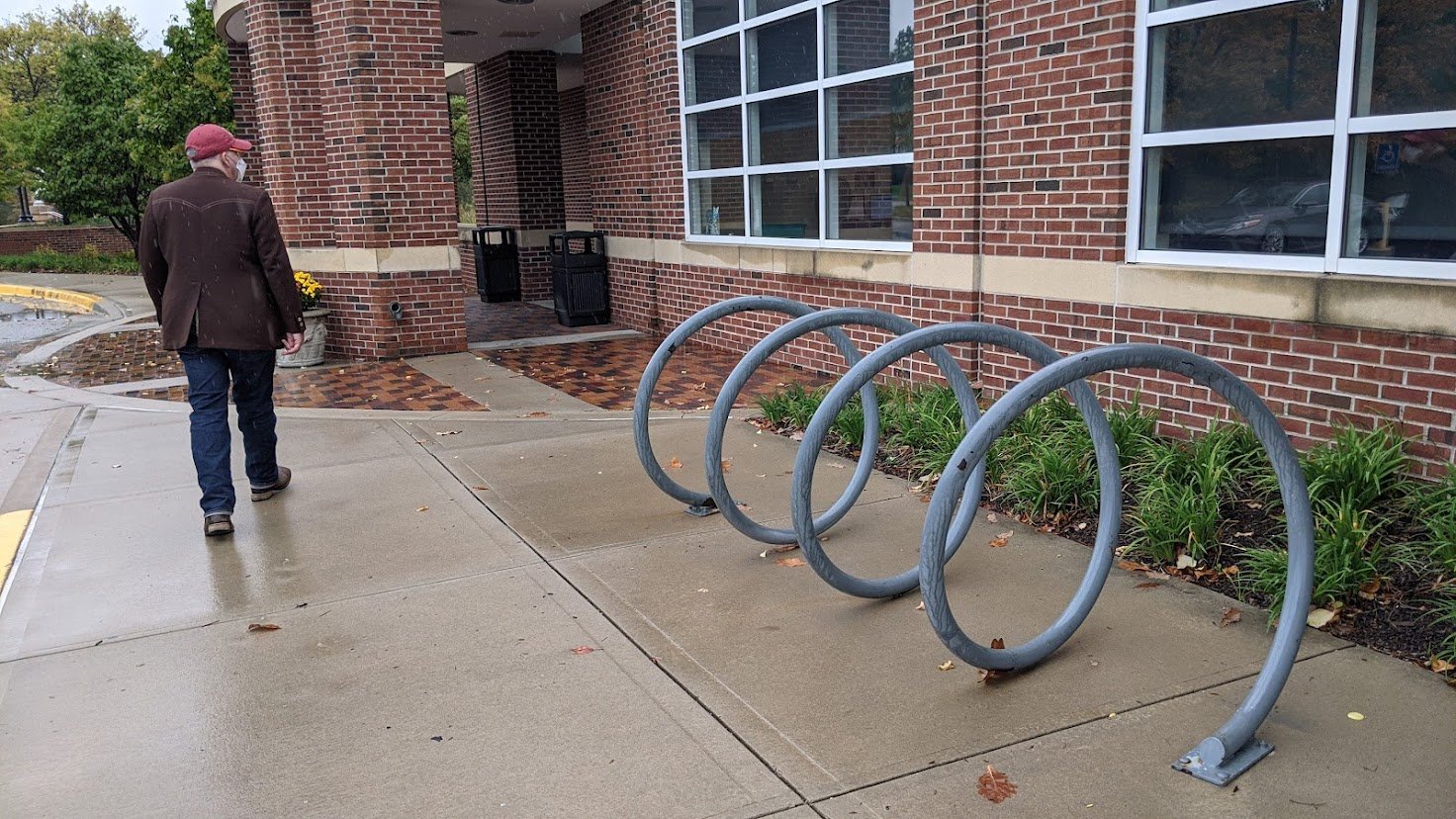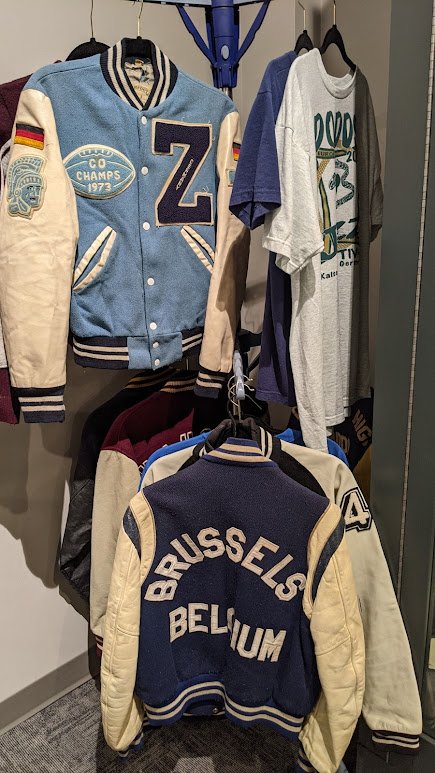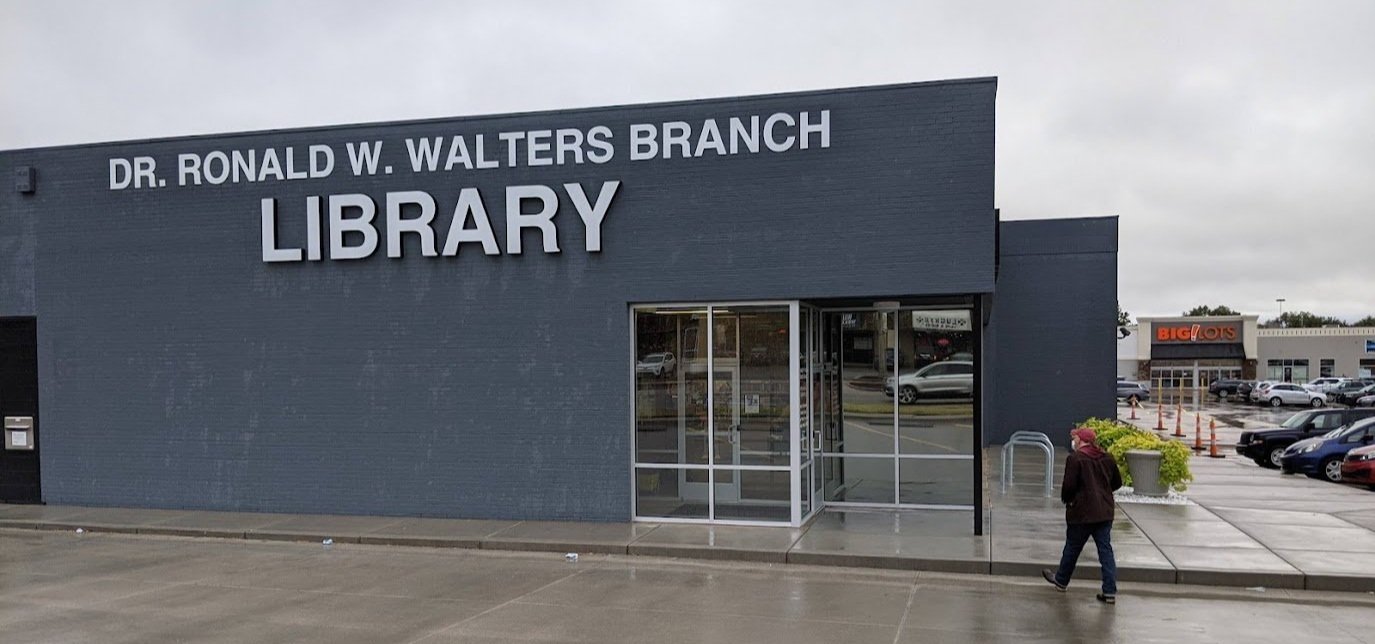Midwest Tour: Kansas Libraries
We visited Kansas twice this past October. Once as we were driving from Kansas City to Lincoln to speak at the Nebraska Library Association conference in Omaha, and then again when we spoke at the Kansas Library Association conference in Wichita. We visited libraries in Acheson, Leavenworth, Overland Park, and four in Wichita: the main Advanced Learning Library, as well as Rockwell, Walters, and Westlink branches. We also stumbled across the American Overseas Schools Historical Society Museum and Archives. So much to share!
Heading into the Leawood Prairie Branch Library.
Upon leaving Missouri, our first stop was Overland Park, at the Leawood Prairie Branch of the Johnson County Library system. It’s a large and open space with plenty of interesting features. There are a ton of computers and workspaces, which we’re always happy to see. There’s also a small gallery that’s done in partnership with InterUrban ArtHouse. The library’s relationship with the arts goes beyond the wall though.
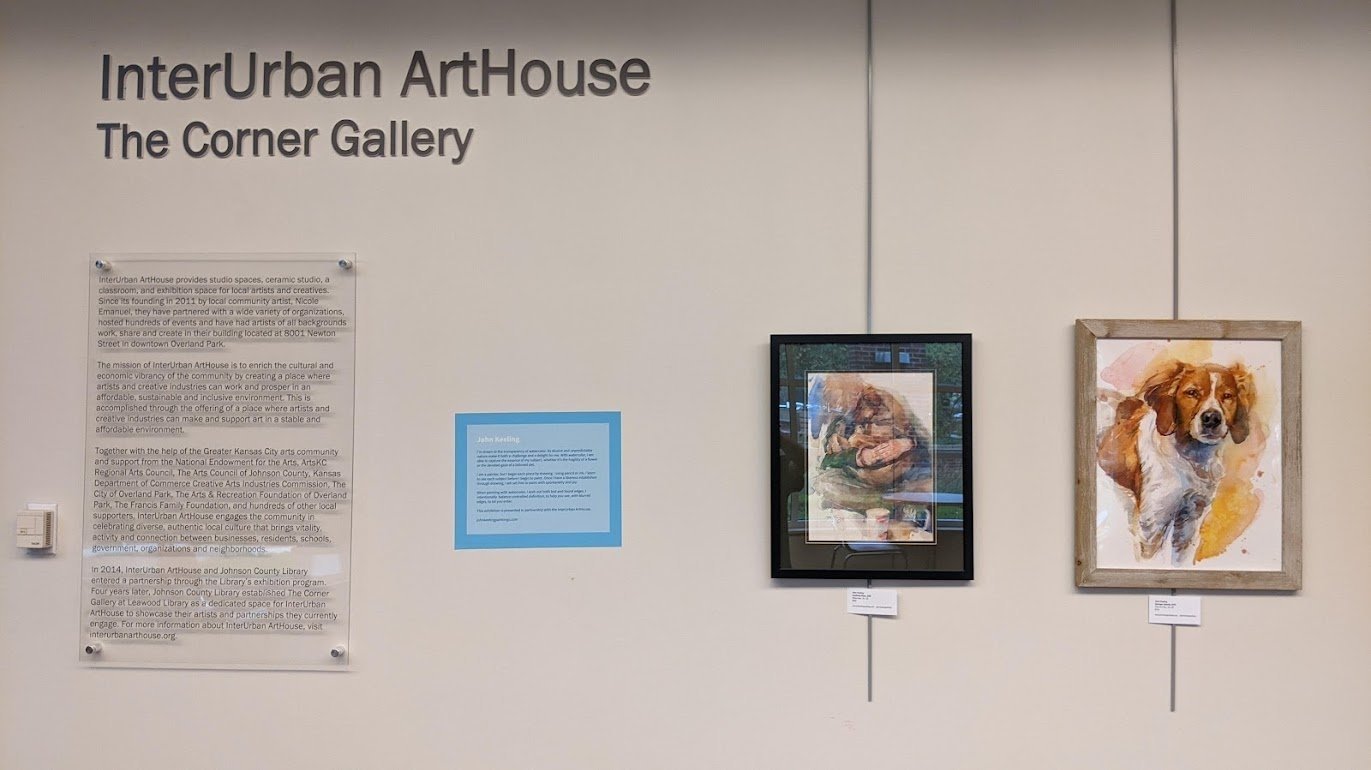
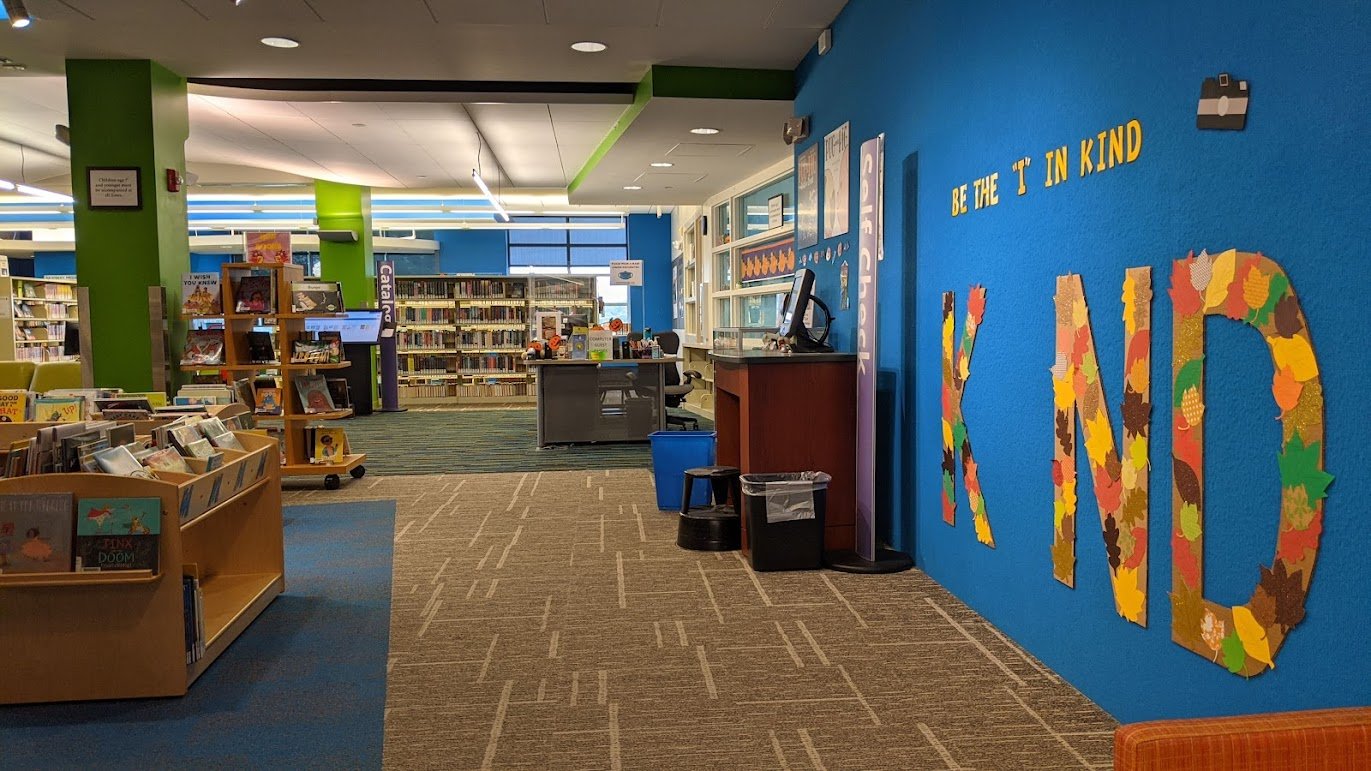

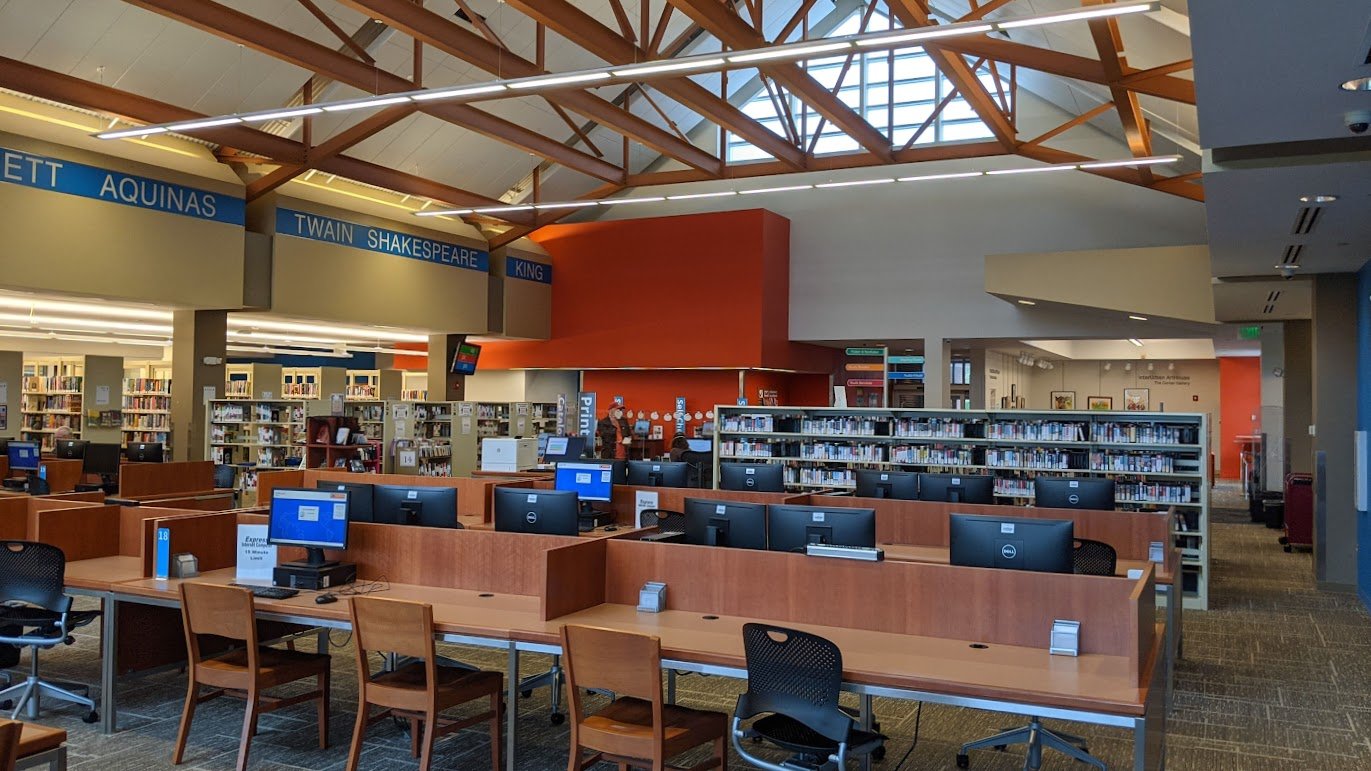
During our visit, we chatted with Cassandra Gillig, an information specialist (and apparently an oil tycoon according to her bio). She gave us a copy of elementia, the library’s teen literary magazine. The content, production, and process around publishing the magazine are all inspired - and a bit intense. It’s a project that teens are anxious to participate in and it’s easy to understand why. This isn’t tame and tepid stuff. We were very impressed by their creativity and the fact that they have the library as a partner.
The Leavenworth Public Library.
From Overland Park, we made our way to the Leavenworth Public Library. Housed in a former grocery store, it’s a small but comfortable library. During our visit, we spoke with Matthew Nojonen and Valarie Lamoreaux, the library’s director, and assistant director respectively, as they fought with some AV equipment.
Masks were required - and worn - in Leavenworth.
We were curious if there was much interaction between the public library and Ft. Leavenworth, home to the US Army Command and General Staff College. Whatever there is is limited, given the military-focused academic work being done at the base. The town is also home to the infamous U.S. penitentiary, which, according to the Admissions and Orientation Handbook, has a leisure library and participates in interlibrary lending.
We also asked about mask compliance and were told that it was not a problem. This is something we heard pretty frequently on our travels, often coupled with something like, “it’s the knuckleheads in X, Y, or Z that are the problem . . .” Thankfully, we were able to avoid the “knuckleheads” on this trip.
It was late October during our visit and there were Halloween decorations galore, in Leavenworth and elsewhere. In the library’s display cases there were several local ghost stories. Spooky!
The Atchison Library.
After Leavenworth, we drove to Atchison, the birthplace of the famed aviator, Amelia Earhart, and namesake of the Atchison, Topeka, and Santa Fe railroad. The Atchison Library was established in 1879 and moved into its current location in 1921. It became a publicly-supported public library in 1958 and saw a major expansion in 1985.
Liz Hrenchir, the Collections, Circulation, and Kansas Room Librarian, was kind enough to show us around the library. The library is small but was active during our visit. It has separate areas for adult fiction/non-fiction, a good teen space, and a really large children’s room. All were well-kept and appealing.
Amelia Earhart is a central figure at the Atchison Library.
We enjoyed all of the Amelia Earhart resources and memorabilia present throughout the library, including items in the Kansas Room. The other thing about the Kansas Room -and this is true of a lot of libraries - is that it houses the archives of the town’s various newspapers that have come and gone over the years. I find the index cards of births, marriages, and deaths to be fascinating.
After the library, we visited the Atchison County Historical Society & Museum. We were glad it was open because the Amelia Earhart birthplace was closed and Adam needed to get his hands on some awesome aviatrix merch! The museum was interesting, but the visit was slightly marred by an interchange with an unmasked patron, who was a loud talker and not fond of science.
As we left Atchison, we headed north to Nebraska, but that is a tale for another day. In this post, we’ll return to Kansas some weeks later, when our travels took us to Wichita, where we were speaking at their state library association conference.
Wichita is an amazing city. Small, for sure, but so much energy and so many wonderful people. We flew in on Tuesday night and weren’t speaking until Thursday, which gave us time to explore several of the city’s libraries. Our first stop was the city’s Advanced Learning Library, which is, in a word, amazing.
The Advanced Learning Library.
It was a rainy day, so we took a cab from the hotel to the library. On the way, we passed the “old” library, which is a spitting image of Boston City Hall. I’m not sure that the brutalist approach is exactly a good thing, but it is what it is.
Wichita is not a big public transportation city, at least that’s what we heard, but there are a few of the city’s bus lines nearby. There is plenty of parking, on-site and in the area. It’s always interesting to hear how people describe traffic and parking. Pretty much every place we’ve visited, folks complain about these things, but we’ve almost always seen worse.
Walking into the library, we were struck by a few things right off the bat. The first was how friendly and approachable people were. I was standing outside the Friend’s bookstore and was motioned inside. The fellow working there wanted to be sure I saw what was available. It’s a clean and well-stocked little shop and I appreciated his effort. We were also impressed by the size of the collection, more than 600,000 in a wonderful diversity of spaces.
The spaces! There are so many striking rooms and areas throughout the library. There is a cafe area, a really nice computer lab, a lovely outdoor reading area on the second floor, and the most fantastic outdoor space for kids that we’ve ever seen. The teen room features gaming systems, casual seating, and the ability to stream your own music. There are a ton of study rooms and other meeting spaces that can accommodate a few people or as many as 300! The local history/genealogy space is really impressive, housing more than 40,000 items.
The STEAM Garden at the Advanced Learning Library.
Let me scroll back to the outdoor kid's space. We’ve seen a lot of examples over the course of our travels, but this one was simply breathtaking. It’s a STEAM Garden with a ton of fun features and activities. Made possible through the support of the Spirit Aerosystems and Keith and Georgia Stevens, it has a cool aviation theme. Around the walls are instructions for folding different paper airplanes, and suspended above to provide shade are several colorful “paper” planes. One of the neatest things is a read-along story that is controlled by a hand-crank. Turn it faster and things speed up, turn it the other way and it slows down.
This video captures some of the fun and excitement of the Garden:
Speaking of STEAM, the library has a really nice collection of “STEAM to GO” kits. These are self-contained sets of activities focused on a range of topics. During our exploration of the library - and in talking with the staff - we heard there wasn’t much of a Library of Things collection. I’d say these kits neatly fit that bill!
As we spoke with library staff, an interesting programming/accessibility issue came to mind. First, let me say that the library is good in terms of accessibility, can’t remember bathroom door buttons, but much else was in place and good. What came up in conversation on the topic was interesting. Like many libraries, they moved to virtual programming during the pandemic. This made programs accessible for lots of people who might not have participated in the past. As libraries return to in-person programming, will there be hybrid offerings that continue to provide access to those unable to come to the library?
This isn’t something limited to Wichita. We’ve had conversations with many library people as they consider the issue. As much as we value the physical space of libraries, we also believe they should provide the services their communities need, and Covid has demonstrated there is a need for remote programming. We’ll be interested to see how this plays out.
Our visit was on a rainy Wednesday morning, and we were surprised by how many people were using the library. It’s always so good to see. Despite the number of people, the library was surprisingly calm and quiet. That’s not to say there weren’t bursts of laughter and conversation to be heard, just that it wasn’t distracting or overwhelming.
On the second floor, we saw a copy of the world’s biggest book (at least according to the staff). I have my doubts and was unable to find any supporting details for the claim but will keep digging! On a more, perhaps, credible note, the reference section is also on this floor. One really outstanding part of the collection? Row upon row of automotive manuals for all makes and models spanning the decades. Very cool.
Also on this floor is the local history and genealogy collection. It is massive, as mentioned above, with more than 40,000 items. Adam sought assistance finding information on his new hometown, Lancaster, Massachusetts, and I headed for the high school yearbooks. Amazingly, the library’s collection included a history of Lancaster that he hadn’t seen before. Upon consulting Joe Mulé, the director of the Thayer Memorial Library in Lancaster, Adam learned it was a difficult volume to fine. Impressive. I was able to find Class of 1984 high school yearbooks and imagined who would have been my friends and what my life would have been like if I’d grown up in Wichita.

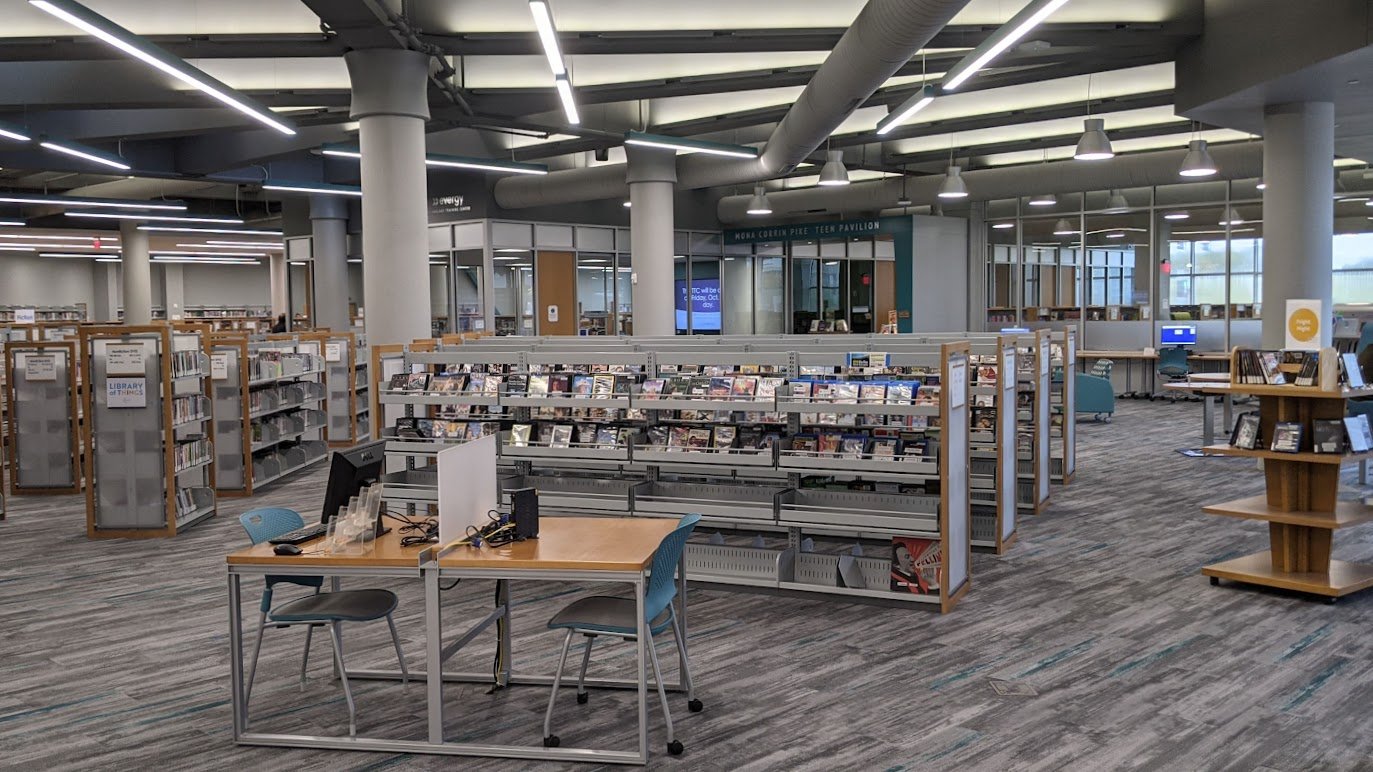
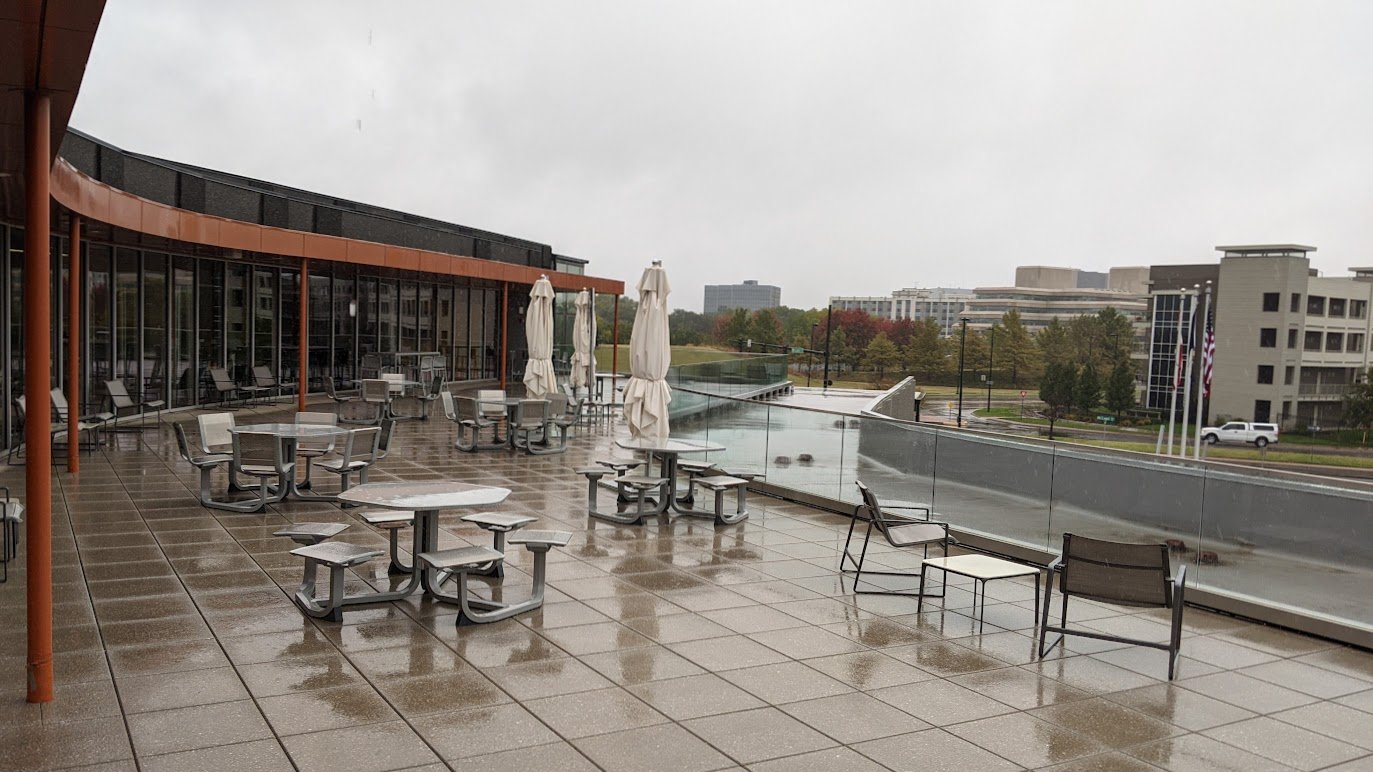
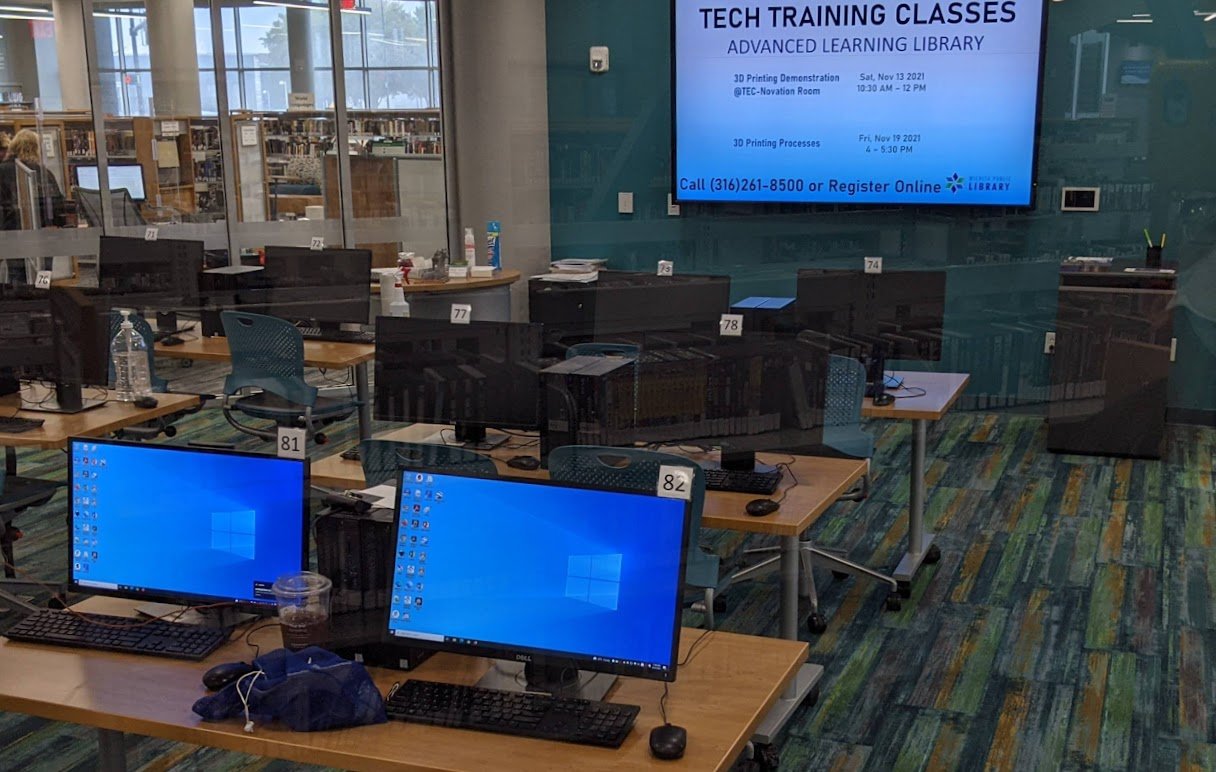
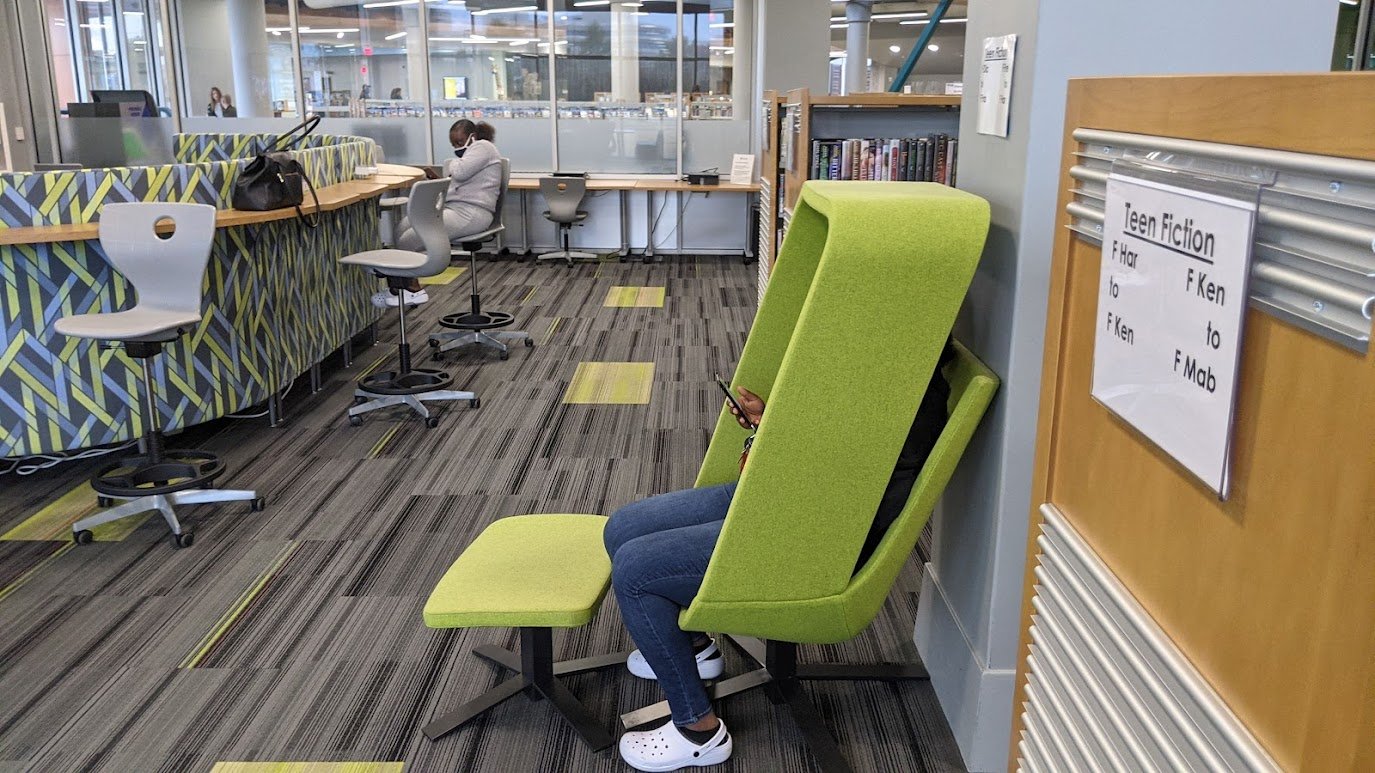
The library’s technology offerings are very good - but with one glaring issue, which we’ll come back to. First, the good: nearly 50 public computers, as well as several dedicated systems in the teen room, children’s section, and reference area. There is a laptop “vending machine” that allows patrons to borrow a computer for use in the library; a large tech training area; a podcast/media studio; and more. In short, it has virtually all the tech bells and whistles you expect from a state-of-the-art library. So, what’s my beef?
The wifi. You need to have a Wichita Public Library card to get online! We have been to hundreds of libraries, and this was only the second time we’ve seen this policy. We were honestly a little incredulous. We asked a number of people for an explanation but no one was able to offer one that made a whole lot of sense.
Are there workarounds? Sure, you can apply for an e-card, which gives you access to digital services. I did it at one of the branches and it was pretty time-consuming and required a few forms of verification. This is a real barrier to access. Without the time, patience, required documents, etc. one doesn’t have access. For a library with such rich services, this is a real shame.
We don’t want to end on a sour note though, there is so much to love about this library - and the city it serves, as we would learn!
We left the library, walking through the rain, to a nice little noodle shop, Sakura Japanese Cuisine. Piping hot soup, nice and spicy, it was just what the doctor ordered.
Items from the AOSHS collection.
Making our way back to the hotel, we came across an unexpected gem. The American Overseas Schools Historical Society Museum and Archives is dedicated to the collection and preservation of memorabilia and historical documents related to overseas schools operated by the Department of Defense. Adam Gossman, the archivist of the organization, showed us around the collection. My father-in-law was a civilian employee stationed in Wiesbaden, and the museum included a nice varsity letter jacket from the school on display. It’s right around the corner from the library and offers a glimpse into an interesting slice of history.
During our time in Nebraska, we met Wes, a construction manager and game developer from Wichita. Adam had stayed in touch, and in the afternoon, he drove us on a tour of some of the city’s branch libraries.
The first was a bit of a wash. We saw a sign for a library, parked, hopped out of the car, and went searching. And searching and searching. Our search continued until a custodian told us the library hadn’t been at this location for years. Oops! Maybe it’s time to take the sign down so greenhorns like me and Adam don’t make that mistake again!
We headed to the Walters Branch, a newly opened library in the southeastern part of the city. It was a really interesting visit. The branch is named for Dr. Ronald W. Walters (1938-2010), an author, speaker, and scholar of African American politics. As president of the Wichita youth chapter of the NAACP in July 1958, Walters organized the Dockum Drug Store Sit-In, one of the first lunch counter sit-ins of the civil rights movement. The branch is located in what had been a tire shop that shares a parking lot with a strip mall. That meant there was a ton of parking. The area is also moderately walkable for those living in the neighborhood.
Everything is located on a single floor, which really helps with accessibility. It’s also new, so everything is in great condition. We were shown around by Bret Harvey, a library assistant. He was great and was generous with his time and patient with our questions. The library consists of one, large, open space. There is a community/meeting space that has a separate entrance for after-hours use.
Inside the Walters Branch.
The library sees a healthy flow of users. Many, according to Bret, are seeking help with the technology needed to access services online. The fact that 200-300 people per day seek this assistance speaks to the essential role public libraries play. I have heard it argued that libraries, while nice to have - and perhaps even important to a community - are not truly essential. To those making that argument, I ask, where else can people turn? Is there some other place that provides free access to computers, connectivity, and support?
The Walters Branch (and thousands more like it across the country) is doing important work. They deserve heaps of praise and support.
The Rockwell Branch.
Our kind guide next took us to the Rockwell Branch, and there he bid us adieu. We thanked him and made our way into the library.
It’s a low-slung brick building from 1976. It’s part of a larger community complex, and there’s plenty of parking. It’s also located near a school and gets plenty of foot traffic. One thing to point out about the Wichita library system is the fact that public transit directions to every branch appear on the website. It’s a really basic piece of information, but not every library provides it. Wichita does it really well.
Its design is utilitarian, which is in keeping with its age. We like to imagine the design conversations that led to boxy brick or cinderblock schools and libraries through so much of the latter 20th century. It’s a single large room with a bank of public computers separating the kids and adult sections. During our visit, the library was bustling, something we love to see! Surprisingly, it was also pretty quiet given the flow of people.
Chatting at the Rockwell Branch.
Despite being nearly 50 years old, the library is in good condition. It’s fairly comfortable, with much of the furniture seeming the same age and the building itself. A potential crisis was averted when Adam eventually found a comfortable chair.
With the day waning, we headed out into the rain. After much walking, a visit to a bookstore, and a Lyft driver recommendation we ended up at The Anchor. We were there for ages and had a great time with the owner and staff. Definitely recommend - especially the open-face burger on a thin piece of cornbread with fries, queso, gravy, and jalapenos!
We met an awesome community of restaurant workers, business owners, artists - and, of course - librarians. There’s such a great vibe in Wichita.
Speaking at the Kansas Library Association conference.
The next day, we presented at the conference. Our topic was Seeing the Library Through Your Patrons’ Eyes, and it was well-received. It’s a presentation we love to deliver as it gives us a chance to talk about how we look at libraries and highlight examples of things we’ve seen during our travels. If you’d be interested in having us speak, drop us a note at info@librarylandproject.org.
After our session and a little shuteye, we headed out in search of boots and both of us hit paydirt at The Boot Barn. I mean, come on, these are awesome!
On our way to the airport the next morning, we stopped at one final library in Wichita, the Westlink Branch. This is an early-1980s library and it has some flair. The stonework on the exterior is actually pretty cool looking. It’s well-located, near schools and a residential neighborhood. Overall, whoever did the location-planning decades ago did a great job in Wichita.
The bulk of the library is one large open space with a separate children’s area and study room. I actually had work to do so I bit the bullet and got the necessary e-card for Wifi access. The person who helped me was super patient and friendly, but it really did seem like an unnecessary hurdle. Once I had it, though, I was able to sit down in the very comfortable and quiet study room and get down to business.
The Westlink Branch.
As we were preparing to leave, we noticed - as we often do - the apparent lack of diversity in the library. With around 80 percent of librarians being white, it isn’t surprising. This isn’t a dig at Wichita, it’s an issue at virtually every library we visit. I said “apparently” and will explain why.
We had a couple of lingering questions and made our way to the service desk. The person helping us pointed to a sign saying she was deaf. We went back and forth in writing and it struck me this was also an important form of diversity. She brings a different set of experiences and perspectives to the community and that’s super valuable.
Winging back East, we reflected on our two trips around Kansas. The Advanced Learning Library was as up-to-date and modern as any library out there. We’d also seen neighborhood and town libraries. Together, they provided a nice cross-section of libraries.
Traveling around the communities by car, foot, and Lyft gave us a great sense of this vibrant state. We hope to return to Wichita again for the 2022 Kansas Library Association conference and to see more of the state and its libraries.

